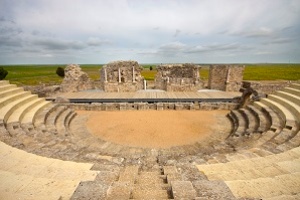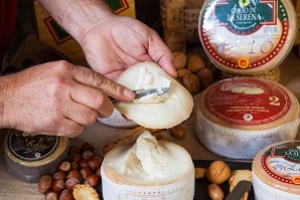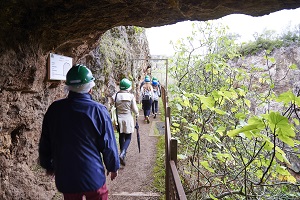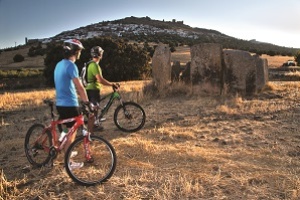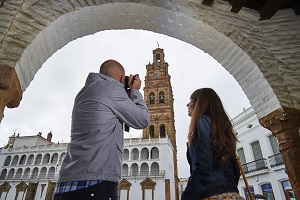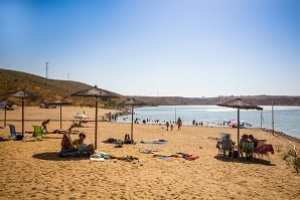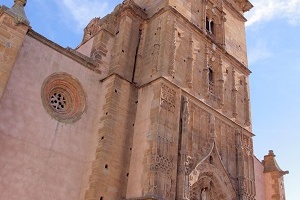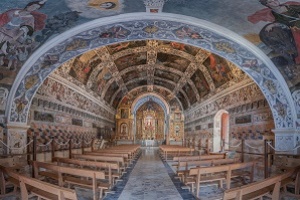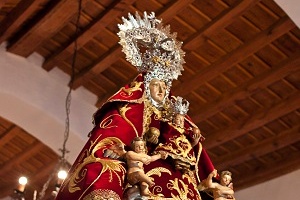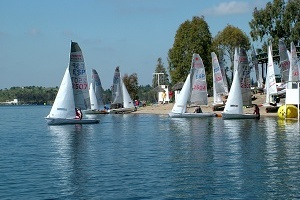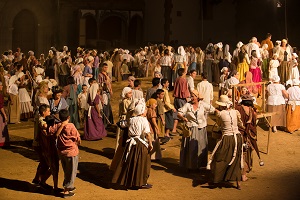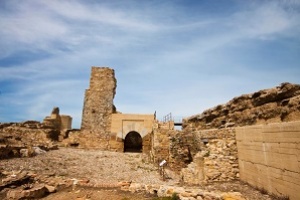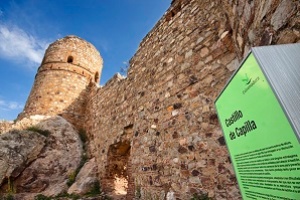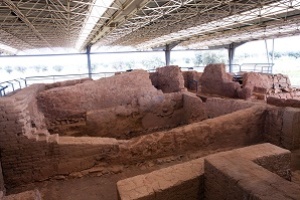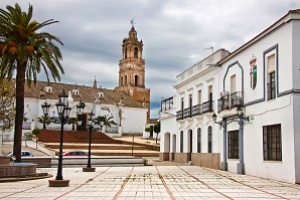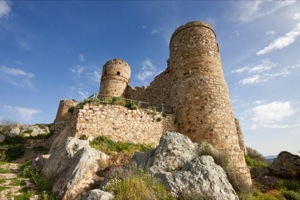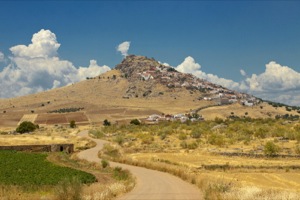Destinations
La Serena and Campiña Sur
In southeast Extremadura these two districts welcome us with their extensive plains, their heritage villages, their castles, their churches, and their excellent gastronomy. Let us mention the most noteworthy aspects for a trip to these territories rich in history, culture, and nature.
- Come to Extremadura
- La Serena y Campiña Sur
Outstanding places in La Serena and Campiña Sur
In southeast Extremadura these two districts welcome us with their extensive plains, their heritage villages, their castles, their churches, and their excellent gastronomy. Let us mention the most noteworthy aspects for a trip to these territories rich in history, culture, and nature.
LA SERENA
The Mozarabic Route to Santiago. It crosses the municipalities of Monterrubio de la Serena, Castuera, Campanario, Magacela, and La Haba in the district of La Serena. It comes from Córdoba, where various pilgrimage routes from Almería, Málaga, Granada, and Jaén come together, and continues towards Mérida. In this capital city of Extremadura it links up with the Ruta de la Plata.
Capilla Castle. It is thought that the current construction is but a small part of a huge Moslem fortress. It was besieged in the 13th century by the troops of Ferdinand III the Holy and subsequently donated to the Order of the Temple. in 1777 it passed to the House of Osuna. The castle affords spectacular views.
Castuera. This village cannot be conceived without its turrón, its lamb, or its cheeses. The Turrón Museum explains how it is made and the historical relationship of Castuera with this sweetmeat. In September the Sheep Fair brings together the best of the sector and organises cheese and stew tasting sessions and competitions. Some 3 kilometres away from the village it is moving to see the remains of a concentration camp built during the Civil War, which held some 9,000 prisoners between 1939 and 1940.
Chapel of Nuestra Señora de Belén. Some 11 km from Cabeza del Buey we come to this sanctuary in baroque style which dates back to the 13th century. Its enclosure contains seven centenary elms which are Outstanding Trees of Extremadura.
Chapel of Nuestra Señora de Piedraescrita. A legend of Campanario tells how the figure of a 13th-century virgin was found hidden under a late Roman gravestone. This archaic figure is the Virgen de Piedraescrita who rests in a small 16th-century chapel. Its interior retains a Palaeo-Christian font, the most southerly Romanesque frescoes in Spain, and 16th-century ceramics from Talavera.
Magacela. This lovely village with its steep, narrow and irregular streets has numerous 15th- and 16th-century houses and mansions. Its castle on the hilltop was an important watchtower from the times of the Roman Empire to the Reconquest.
Inland seas. The reservoirs of La Serena (the second largest in the Iberian Peninsula), Orellana, and Zújar are ideal for water sports, fishing, and birdwatching. It is worth mentioning the beaches of Orellana La Vieja (with a blue flag since 2010, the first for an inland sea in Spain) and Isla del Zújar (Castuera).
La Serena cheese. This is one of the major gastronomic ambassadors of the district together with lamb, Ribera del Guadiana wine, olive oil from Monterrubio, and turrón from Castuera. It is made of raw milk from Merino sheep, salt, and vegetable rennet extracted from the artichoke thistle (Cynara cardunculus), one of its peculiarities. Its texture is soft and creamy. It has a powerful but unsalty taste and a fine point of final bitterness.
Archaeological remains. La Serena is a paradise for enthusiasts of prehistory and ancient civilisations, from Cancho Roano (Zalamea de la Serena), the palace-sanctuary of Tartessian origin, to the protohistorical building of La Mata (Campanario) and Hijovejo (Quintana de la Serena), a fortified Roman enclosure. They all have interpretation centres such as that devoted to Cave Paintings of Extremadura in Cabeza del Buey. In this municipality in the Valle del Aliso the Cerro Estanislao shelter of cave paintings can also be found. Moreover, dolmens can be seen at Magacela (Cerca de Marco) and the Valle de la Serena (Finca de San Damián).
Zalamea de la Serena. It is known for its distyle, a treasure of Romanesque art consisting of two columns 23 metres in height which was declared a National Monument in 1931, and the performing of ‘The Mayor of Zalamea’, one of the classic plays of Calderón de la Barca in which some 500 locals take part. It is held in August and is of National Tourist Interest. The Royal Chapel of the Cristo de la Quinta Angustia and the Arribalavilla Castle are worth visiting.
CAMPIÑA SUR
Alcazaba de Reina. The silhouette of this Arab fortress gives us an idea of the strategic importance which it had in the past. It retains a wall from the Almohad period (12th century), several cisterns similar to those of Cáceres y Medellín, a keep, and a 15th-century chapel of Visigothic origin. It is located on the highest point of the district in an ideal place for observing the landscape and at night the starry sky. In August it is the venue for the Full Moon Festival.
Mudejar art. This style can be found in many parts of Extremadura but is one of the distinctive features of the Campiña Sur, where it is easy to find churches, towers, and houses with its stamp. Azuaga, Campillo de Llerena, Fuente del Arco, Granja de Torrehermosa, and Llerena provide clear proof of this.
Azuaga. The main town of the district has an interesting collection of monuments in which three churches stand out: Nuestra Señora de la Consolación (the second largest church in the province after the Cathedral of Badajoz) with Renaissance and gothic elements; La Merced, Mudejar; and that of El Cristo del Humilladero, baroque. It is worth visiting the District Ethnographical Museum of La Sierra and La Campiña, and on a hilltop the remains of the Miramontes Castle which was built by the Arabs.
Berlanga. It is considered to be one of the most characteristic villages of the district owing to its layout with numerous narrow streets, small plazas, and houses of traditional architecture. Its most important monument is the Church of Nuestra Señora de Gracia, which is of Mudejar origin with subsequent baroque and neoclassical influences. On the outskirts of Berlanga are situated the Roman-medieval bridge and the peri-urban park of Las Quinientas.
Chozos de Llera. In this municipality we find the “series of huts, pigsties, and walls of the estate of Las Mil y Quinientas”, a cultural landscape modelled by agricultural and stockbreeding practices in which abound traditional constructions, water-bearing exploitation, and walls to delimit the plots. Some 50 huts remain in good condition on an estate of 500 hectares owned by the municipality. In 2013 they were declared an Asset of Cultural Interest (Bien de Interés Cultural, BIC).
Roman town of Regina. 1.5 km from Casas de Reina on the old road which joined Emerita Augusta and Hispalis we come to the former Regina Turdulorum with its forum and theatre of the 1st century A.D.. Two thousand years later it is still the stage for performances of Graeco-Latin plays at the Regina Theatre Festival and the Mérida Classical Theatre Festival. The forum retains foundations of houses, civil buildings, porticoes, and fragments of the Roman road.
Chapel of the Virgen del Ara. This Mudejar treasure was built in the late 14th century and is known as the "Sistine Chapel of Extremadura” for the magnificent 17th-century frescoes painted on its vault. They represent 26 scenes of the Book of Genesis. The chapel is 7 km from Fuente del Arco and is also noted for its Mudejar arches and its belfry. It affords superb views of the Sierra de San Miguel, the Sierra del Viento, and the banks of the River Ara.
Granja de Torrehermosa. It is worth visiting this village which borders on the province of Córdoba to see the slender Mudejar tower of the Church of La Purísima Concepción which gives its name to the town. It dates from the 16th century and was classified as a National Monument in 1931. Experts consider its Mudejar façade to be the second best of this style in Extremadura after that of the Monasterio de Guadalupe.
Llerena. After the Reconquest it became the headquarters of the Order of Santiago and as from 1478 of the Spanish Inquisition. Among its numerous examples of Mudejar and baroque art the following stand out: the Church of Nuestra Señora de la Granada, the Convento de Santa Clara (sampling the sweetmeats known as ‘hearts of the nuns of Llerena’is a must), the Palacio de los Zapata, and the Churches of Santiago, La Merced, and of the Convento de la Concepción. One of its most popular events is the Traditional Pigmeat Festival of Extremadura (March) which is of Regional Tourist Interest.
La Jayona Mine. This former iron mine, which was abandoned in 1921, is of great geological interest and full of flora and fauna. It is at Fuente del Arco and has an interpretation centre. It is worth exploring the galleries and shafts of this National Monument and discovering the decorative lights and sounds which vary according to the time of the year.
Gallery:
More suggestions
-
Capilla Castle
Located on a crag, Capilla Castle holds numerous historical treasures and provides unique views of the Zújar River.
-
Magacela
Thanks to the large amount of prehistoric remains that can be found in this municipality in the province of Badajoz, it is the perfect destination for those who love to unravel the mysteries of the past.
-
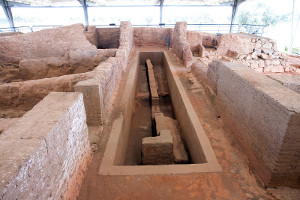
Cancho Roano Temple
This Tartessian monumental sanctuary has been preserved to the present in an exceptional state of repair.
-
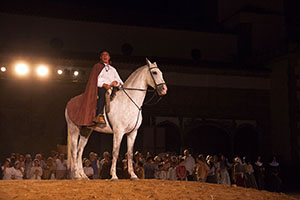
The Mayor of Zalamea
This is a fiesta in which a version of Calderón de la Barca's famous literary work, “The Mayor of Zalamea” is staged.
-
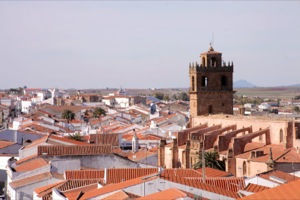
Azuaga
This rural town in south-east Extremadura has a unique climate.
-
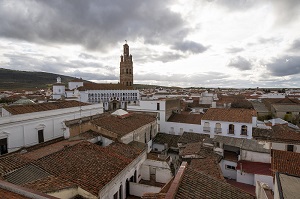
Llerena — an artistic centre
The importance of Llerena as a town attracted an endless flow of leading artists who enriched its heritage.
-
Romana Town of Regina
The Roman past returns through the valuable Roman remains found on the outskirts of the village of Casas de Reina in the province of Badajoz.
-
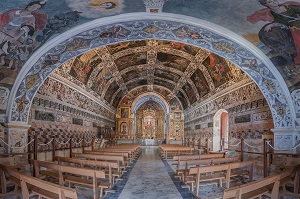
Chapel of Nuestra Señora del Ara
The structure and architecture of the chapel of Nuestra Señora del Ara has evolved over time since it was built in the 14th century, but it still preserves the essence of the Mudejar style.
-
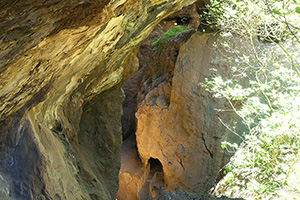
La Jayona Mine
Today, these former iron mines have become an ideal refuge for the area's wildlife and vegetation.

